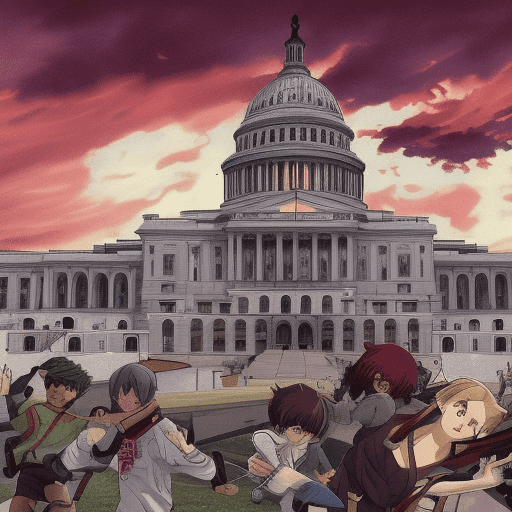During the late 1st Age of Humanity, when America was struggling with passing amendments to deal with final correction of racial issues, that the U.S. Congress failed to raise the debt ceiling.
At first, most pundits and legislators said that a deal was in the works and that the spending deal would be resolved. But as time stretched on, the POTUS had to shutter non-essential government services, which included automatic social payments and tax refunds. Hospitals and other organizations were no longer getting Federal reimbursements for services. Those in the armed forces had their pay suspended but ordered to stay on base.
Now this was done by the POTUS at the time to stir up Congress to speed up the process, and yet the standoff in Congress remained. A standoff held up by 30 congressional members of the Balanced Government Caucus.
The American populace became highly divided on the issue, centering on those who benefit from welfare programs and those who didn’t. Divisions were also made between those for big military spending and those who opposed a large U.S. armed force. Added to this were extreme conservative online pundits who believed the U.S. should only spend money based on its actual revenue, just like any other person. Countering this view were liberal economists who saw governments not “like any other person” but a unique entity being the source of all fiat capital.
The last time the U.S. “defaulted” was back in 1979. According to the U.S. Treasury, it’s not technically a default but an error in bookkeeping. The net result was treasury bond rates, increasing 60 basis points.
But unlike 1979, this time, it was unavoidable. The U.S. Government had reached the point of no return and truly defaulted on its bond payments.
The event was catastrophic. Immediately, the U.S. Treasury notes shot up 100 basis points in a single day and continued to climb at ridiculous rates each day after that. This caused the stock market to dramatically tumble as investors sought to cash in on the bond rise. Then Japan and China dumped their U.S. debt holdings on the market, causing the bond market to collapse. The U.S. dollar quickly lost its prime status a global reserve currency, as currency trading rates collapsed. The Federal Reserve tried to prop up the market began a Treasury note buying program and flooded the banks with currency. Except it was too late, and soon U.S. bonds were worthless as an investment, and stocks soared as bankers loaned out money to investors now short on cash from the bond crash. It was the beginning of quantitative easing on steroids to keep things afloat, while the Federal Reserve began raising interest rates to hold back the inflation that was taking root. Inflation that was caused by the collapse of government spending causing a demand side shock as it forced businesses to raise prices to deal with the immediate lack of sales. Meanwhile, some large multi-national businesses began trimming expenses, starting with labor. Adding insult to injury, the talk of a deep recession was in the air.
Violent protests broke out in major cities in U.S. as people lost jobs, became instantly homeless, and/or were angry at the whole situation they were in.
The stalemate in Congress would break only after another Capitol attack would occur. It would happen when the U.S. House of Representatives were in full session, and a mob of 245 angry citizens armed with nothing more than garden implements, and pieces of metal pipe and wood purchased at a local home improvement store, stormed the Capitol’s halls after bolt cutting down the protective fencing. 134 of the rioters were injured and 14 had died at the scene. Another 11 would die later from their wounds.
Congress passed another period of debt limit exemptions for three years as America fell into a deep recession with high inflation because of the damage caused by the default.
[/cmsmasters_text][/cmsmasters_column][/cmsmasters_row]
Click here to go to the Rosella Tolfree Website and read more posts.


